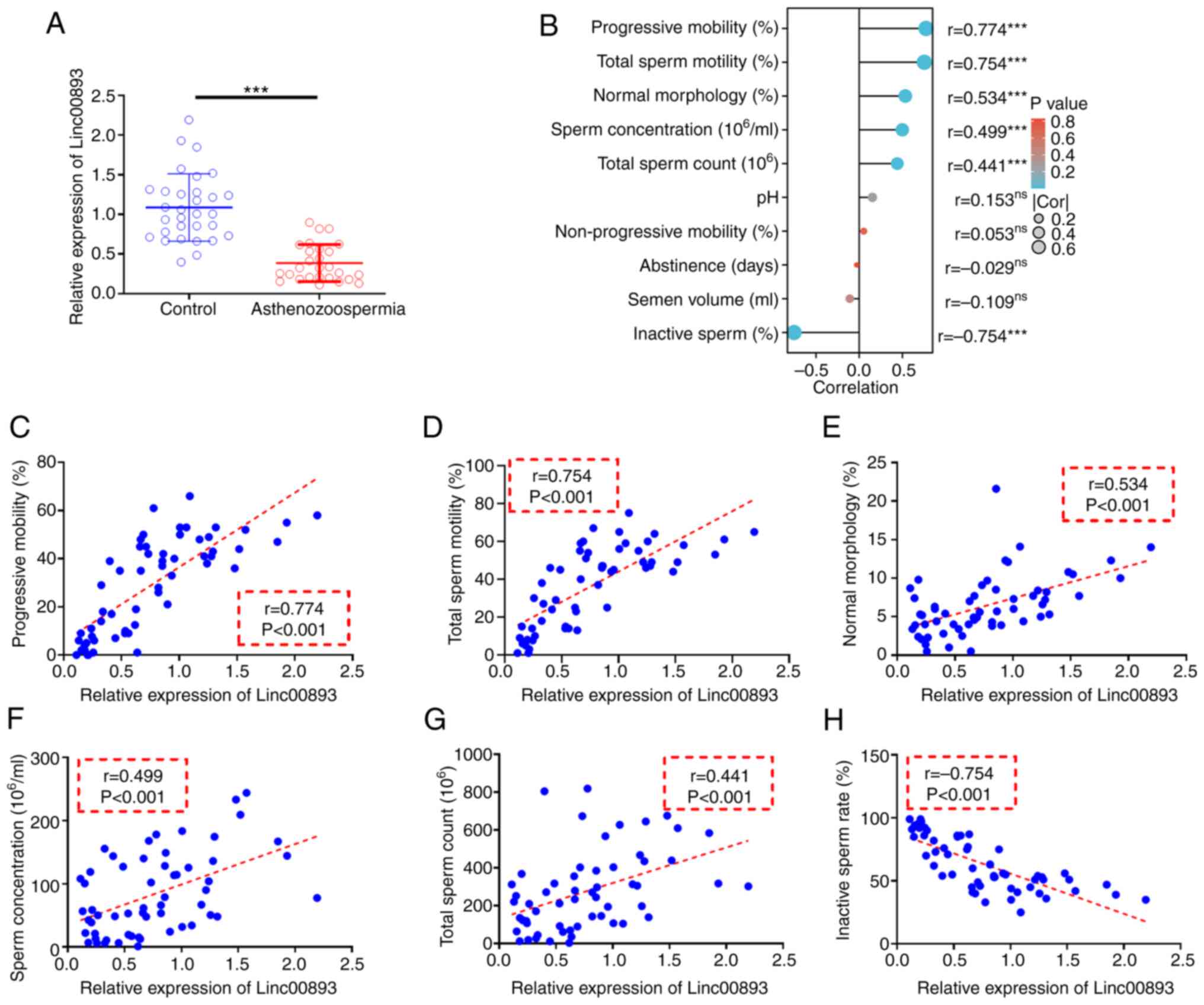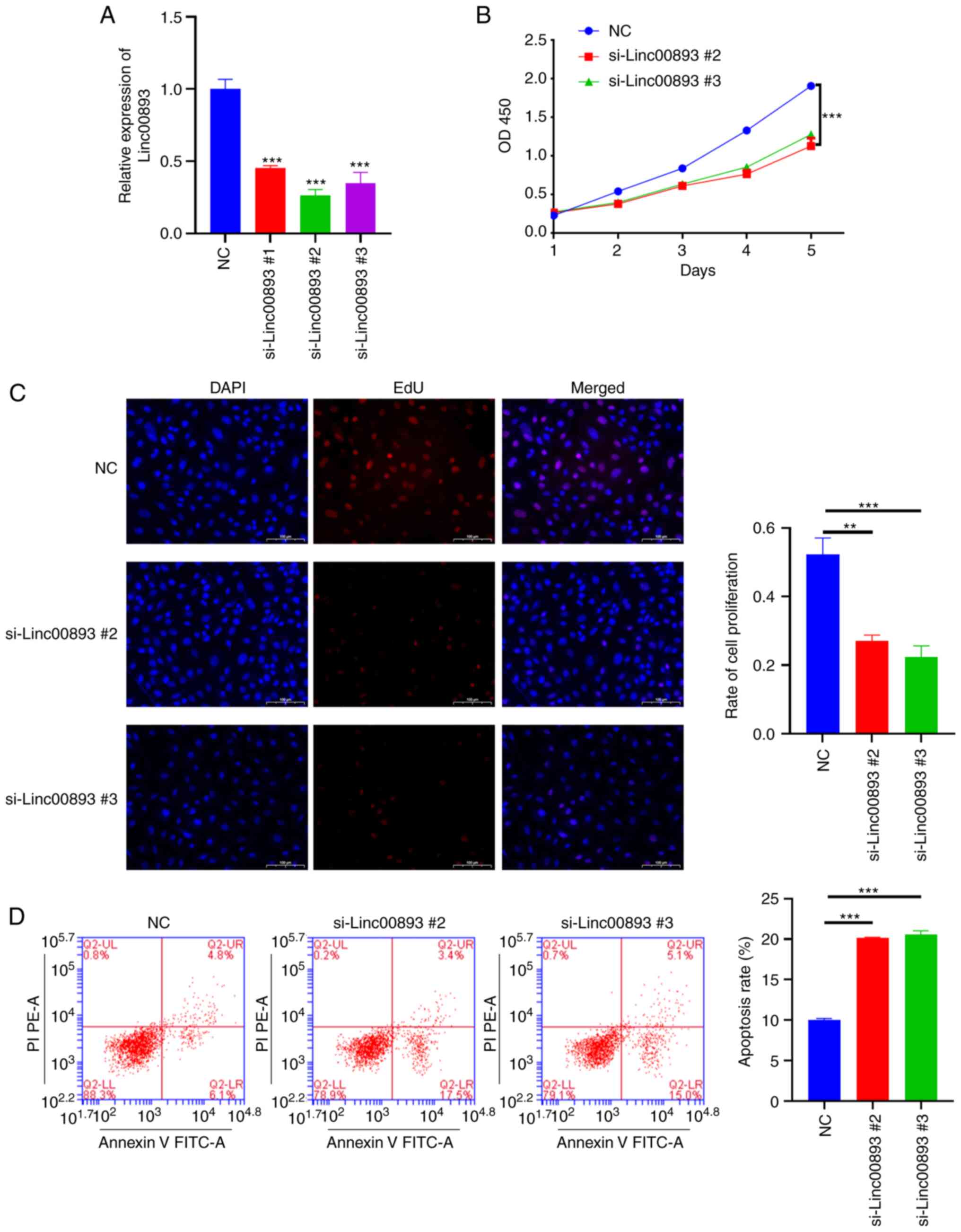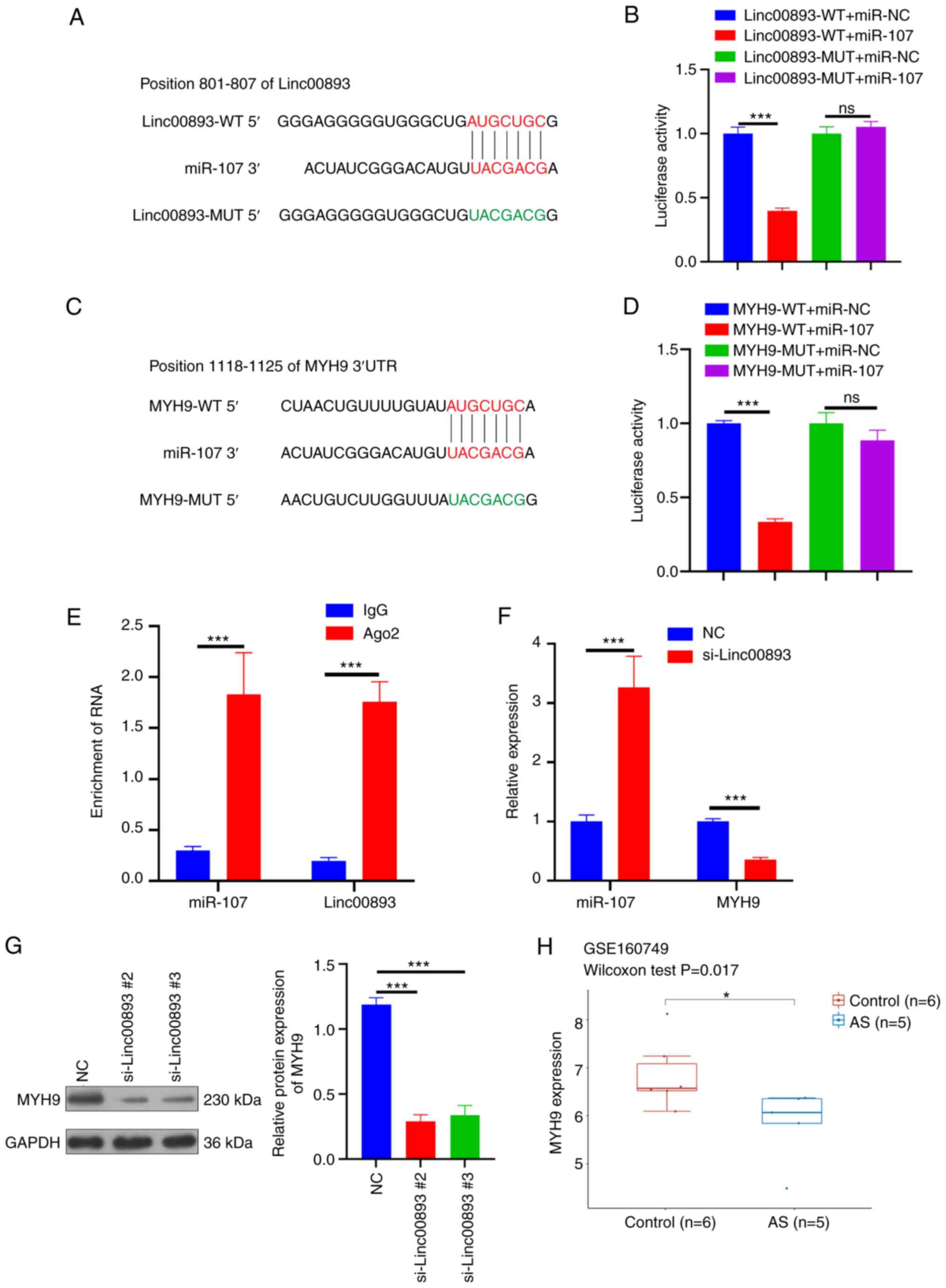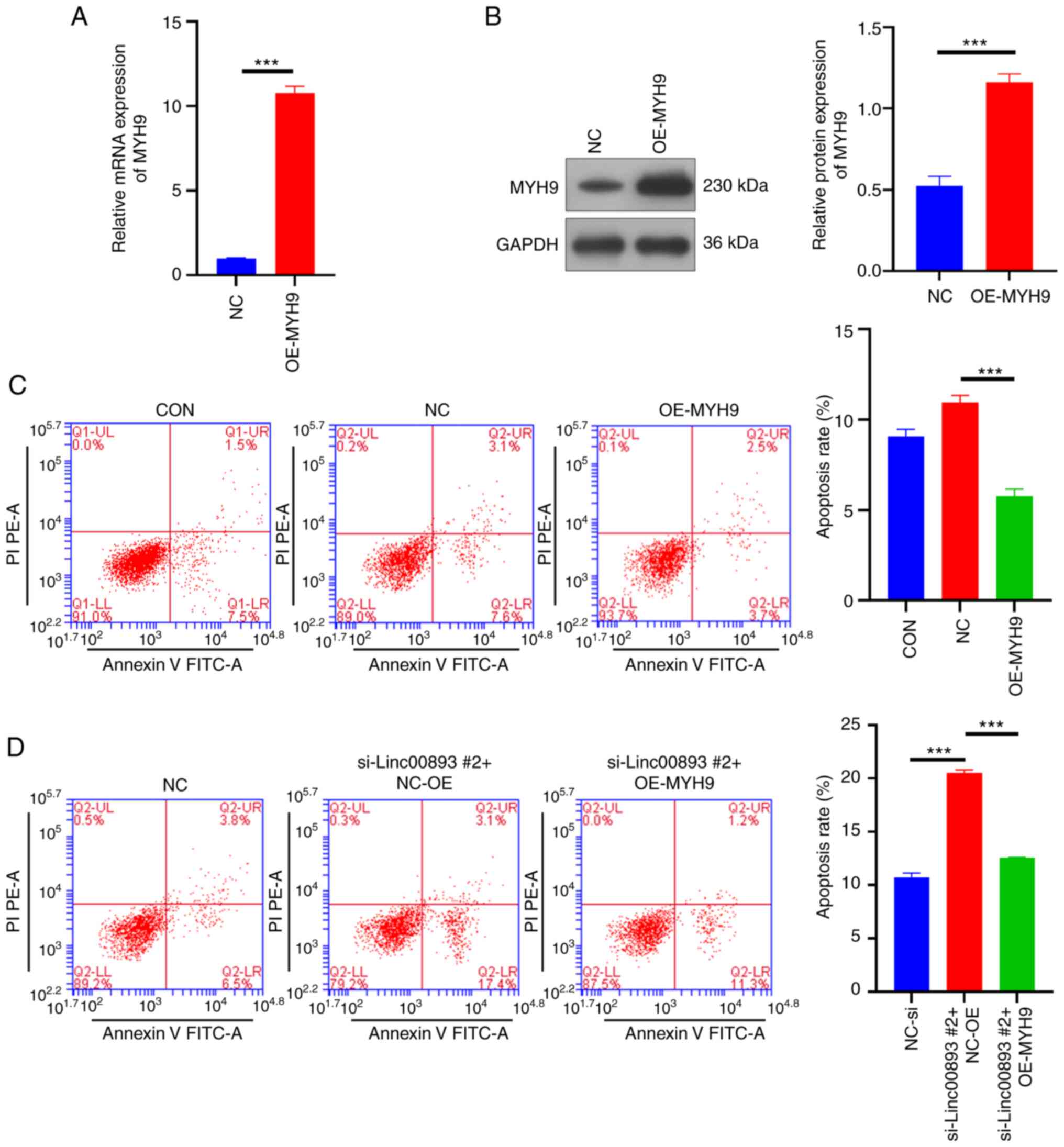|
1
|
Carson SA and Kallen AN: Diagnosis and
management of infertility: A review. JAMA. 326:65–76. 2021.
View Article : Google Scholar : PubMed/NCBI
|
|
2
|
Eisenberg ML, Esteves SC, Lamb DJ,
Hotaling JM, Giwercman A, Hwang K and Cheng YS: Male infertility.
Nat Rev Dis Primers. 9:492023. View Article : Google Scholar : PubMed/NCBI
|
|
3
|
Tu C, Wang W, Hu T, Lu G, Lin G and Tan
YQ: Genetic underpinnings of asthenozoospermia. Best Pract Res Clin
Endocrinol Metab. 34:1014722020. View Article : Google Scholar : PubMed/NCBI
|
|
4
|
Björndahl L and Brown JK; other Editorial
Board Members of the WHO Laboratory Manual for the Examination and
Processing of Human Semen, : The sixth edition of the WHO
Laboratory manual for the examination and processing of human
semen: Ensuring quality and standardization in basic examination of
human ejaculates. Fertil Steril. 117:246–251. 2022. View Article : Google Scholar : PubMed/NCBI
|
|
5
|
Pan MM, Hockenberry MS, Kirby EW and
Lipshultz LI: Male infertility diagnosis and treatment in the era
of in vitro fertilization and intracytoplasmic sperm injection. Med
Clin North Am. 102:337–347. 2018. View Article : Google Scholar : PubMed/NCBI
|
|
6
|
Herman AB, Tsitsipatis D and Gorospe M:
Integrated lncRNA function upon genomic and epigenomic regulation.
Mol Cell. 82:2252–2266. 2022. View Article : Google Scholar : PubMed/NCBI
|
|
7
|
Kyrgiafini MA, Sarafidou T and Mamuris Z:
The role of long noncoding RNAs on male infertility: A systematic
review and in silico analysis. Biology (Basel).
11:15102022.PubMed/NCBI
|
|
8
|
Zhang X, Zhang P, Song D, Xiong S, Zhang
H, Fu J, Gao F, Chen H and Zeng X: Expression profiles and
characteristics of human lncRNA in normal and asthenozoospermia
sperm†. Biol Reprod. 100:982–993. 2019. View Article : Google Scholar : PubMed/NCBI
|
|
9
|
Saberiyan M, Mirfakhraie R, Gholami D,
Dehdehi L and Teimori H: Investigating the regulatory function of
the ANO1-AS2 on the ANO1 gene in infertile men with
asthenozoospermia and terato-asthenozoospermia. Exp Mol Pathol.
117:1045282020. View Article : Google Scholar : PubMed/NCBI
|
|
10
|
Saberiyan M, Mirfakhraie R, Moghni M and
Teimori H: Study of Linc00574 regulatory effect on the TCTE3
expression in sperm motility. Reprod Sci. 28:159–165. 2021.
View Article : Google Scholar : PubMed/NCBI
|
|
11
|
Lu H, Xu D, Wang P, Sun W, Xue X, Hu Y,
Xie C and Ma Y: RNA-sequencing and bioinformatics analysis of long
noncoding RNAs and mRNAs in the asthenozoospermia. Biosci Rep.
40:BSR201940412020. View Article : Google Scholar : PubMed/NCBI
|
|
12
|
Hou J, Niu M, Liu L, Zhu Z, Wang X, Sun M,
Yuan Q, Yang S, Zeng W, Liu Y, et al: Establishment and
characterization of human germline stem cell line with unlimited
proliferation potentials and no tumor formation. Sci Rep.
5:169222015. View Article : Google Scholar : PubMed/NCBI
|
|
13
|
Livak KJ and Schmittgen TD: Analysis of
relative gene expression data using real-time quantitative PCR and
the 2(−Delta Delta C(T)) method. Methods. 25:402–408. 2001.
View Article : Google Scholar : PubMed/NCBI
|
|
14
|
Wang L, Cho KB, Li Y, Tao G, Xie Z and Guo
B: Long noncoding RNA (lncRNA)-mediated competing endogenous RNA
networks provide novel potential biomarkers and therapeutic targets
for colorectal cancer. Int J Mol Sci. 20:57582019. View Article : Google Scholar : PubMed/NCBI
|
|
15
|
Güngör BH, Tektemur A, Arkali G, Dayan
Cinkara S, Acisu TC, Koca RH, Etem Önalan E, Özer Kaya S, Kizil M,
Sönmez M, et al: Effect of freeze-thawing process on lipid
peroxidation, miRNAs, ion channels, apoptosis and global DNA
methylation in ram spermatozoa. Reprod Fertil Dev. 33:747–759.
2021. View
Article : Google Scholar : PubMed/NCBI
|
|
16
|
Yang F, Wei Q, Adelstein RS and Wang PJ:
Non-muscle myosin IIB is essential for cytokinesis during male
meiotic cell divisions. Dev Biol. 369:356–361. 2012. View Article : Google Scholar : PubMed/NCBI
|
|
17
|
Al-Malki AH, Alrabeeah K, Mondou E,
Brochu-Lafontaine V, Phillips S and Zini A: Testicular sperm
aspiration (TESA) for infertile couples with severe or complete
asthenozoospermia. Andrology. 5:226–231. 2017. View Article : Google Scholar : PubMed/NCBI
|
|
18
|
Lord T and Nixon B: Metabolic changes
accompanying spermatogonial stem cell differentiation. Dev Cell.
52:399–411. 2020. View Article : Google Scholar : PubMed/NCBI
|
|
19
|
Hu K, Zhang J and Liang M: LncRNA AK015322
promotes proliferation of spermatogonial stem cell C18-4 by acting
as a decoy for microRNA-19b-3p. In Vitro Cell Dev Biol Anim.
53:277–284. 2017. View Article : Google Scholar : PubMed/NCBI
|
|
20
|
Li L, Wang M, Wang M and Wu X, Geng L, Xue
Y, Wei X, Jia Y and Wu X: LncRNA analysis of mouse spermatogonial
stem cells following glial cell-derived neurotrophic factor
treatment. Genom Data. 5:275–278. 2015. View Article : Google Scholar : PubMed/NCBI
|
|
21
|
Li S, Zhang Y, Dong J, Li R, Yu B, Zhao W
and Liu J: LINC00893 inhibits papillary thyroid cancer by
suppressing AKT pathway via stabilizing PTEN. Cancer Biomark.
30:277–286. 2021. View Article : Google Scholar : PubMed/NCBI
|
|
22
|
Ou X, Zhou X, Li J, Ye J, Liu H, Fang D,
Cai Q, Cai S, He Y and Xu J: p53-Induced LINC00893 regulates RBFOX2
stability to suppress gastric cancer progression. Front Cell Dev
Biol. 9:7964512022. View Article : Google Scholar : PubMed/NCBI
|
|
23
|
Yu C, Fan Y, Zhang Y, Liu L and Guo G:
LINC00893 inhibits the progression of prostate cancer through
miR-3173-5p/SOCS3/JAK2/STAT3 pathway. Cancer Cell Int. 22:2282022.
View Article : Google Scholar : PubMed/NCBI
|
|
24
|
Zhu J, Jiang C, Hui H, Sun Y, Tao M, Liu Y
and Qian X: Overexpressed lncRNA LINC00893 suppresses progression
of colon cancer by binding with miR-146b-3p to upregulate PRSS8. J
Oncol. 2022:80023182022. View Article : Google Scholar : PubMed/NCBI
|
|
25
|
Li X, Wang X, Cheng Z and Zhu Q: AGO2 and
its partners: A silencing complex, a chromatin modulator, and new
features. Crit Rev Biochem Mol Biol. 55:33–53. 2020. View Article : Google Scholar : PubMed/NCBI
|
|
26
|
Barbu MG, Thompson DC, Suciu N, Voinea SC,
Cretoiu D and Predescu DV: The roles of MicroRNAs in male
infertility. Int J Mol Sci. 22:29102021. View Article : Google Scholar : PubMed/NCBI
|
|
27
|
Wang Y, Yang L, Chen T, Liu X, Guo Y, Zhu
Q, Tong X, Yang W, Xu Q, Huang D and Tu K: A novel lncRNA
MCM3AP-AS1 promotes the growth of hepatocellular carcinoma by
targeting miR-194-5p/FOXA1 axis. Mol Cancer. 18:282019. View Article : Google Scholar : PubMed/NCBI
|
|
28
|
Zhao X, Su L, He X, Zhao B and Miao J:
Long noncoding RNA CA7-4 promotes autophagy and apoptosis
via sponging MIR877-3P and MIR5680 in high
glucose-induced vascular endothelial cells. Autophagy. 16:70–85.
2020. View Article : Google Scholar : PubMed/NCBI
|
|
29
|
Pecci A, Ma X, Savoia A and Adelstein RS:
MYH9: Structure, functions and role of non-muscle myosin IIA in
human disease. Gene. 664:152–167. 2018. View Article : Google Scholar : PubMed/NCBI
|
|
30
|
Savoia A and Pecci A: MYH9-related
disease. GeneReviews®. Adam MP, Mirzaa GM, Pagon RA,
Wallace SE, Bean LJH, Gripp KW and Amemiya A: University of
Washington; Seattle, USA: (Online).
|
|
31
|
Kadam KM, D'Souza SJ, Bandivdekar AH and
Natraj U: Identification and characterization of oviductal
glycoprotein-binding protein partner on gametes: Epitopic
similarity to non-muscle myosin IIA, MYH 9. Mol Hum Reprod.
12:275–282. 2006. View Article : Google Scholar : PubMed/NCBI
|
|
32
|
Lamy J, Nogues P, Combes-Soia L, Tsikis G,
Labas V, Mermillod P, Druart X and Saint-Dizier M: Identification
by proteomics of oviductal sperm-interacting proteins.
Reproduction. 155:457–466. 2018. View Article : Google Scholar : PubMed/NCBI
|
|
33
|
Gao S, Wang S, Zhao Z, Zhang C, Liu Z, Ye
P, Xu Z, Yi B, Jiao K, Naik GA, et al: TUBB4A interacts with MYH9
to protect the nucleus during cell migration and promotes prostate
cancer via GSK3β/β-catenin signalling. Nat Commun. 13:27922022.
View Article : Google Scholar : PubMed/NCBI
|
|
34
|
Hu S, Ren S, Cai Y, Liu J, Han Y, Zhao Y,
Yang J, Zhou X and Wang X: Glycoprotein PTGDS promotes
tumorigenesis of diffuse large B-cell lymphoma by MYH9-mediated
regulation of Wnt-β-catenin-STAT3 signaling. Cell Death Differ.
29:642–656. 2022. View Article : Google Scholar : PubMed/NCBI
|
|
35
|
Lin X, Li AM, Li YH, Luo RC, Zou YJ, Liu
YY, Liu C, Xie YY, Zuo S, Liu Z, et al: Silencing MYH9 blocks
HBx-induced GSK3β ubiquitination and degradation to inhibit tumor
stemness in hepatocellular carcinoma. Signal Transduct Target Ther.
5:132020. View Article : Google Scholar : PubMed/NCBI
|















